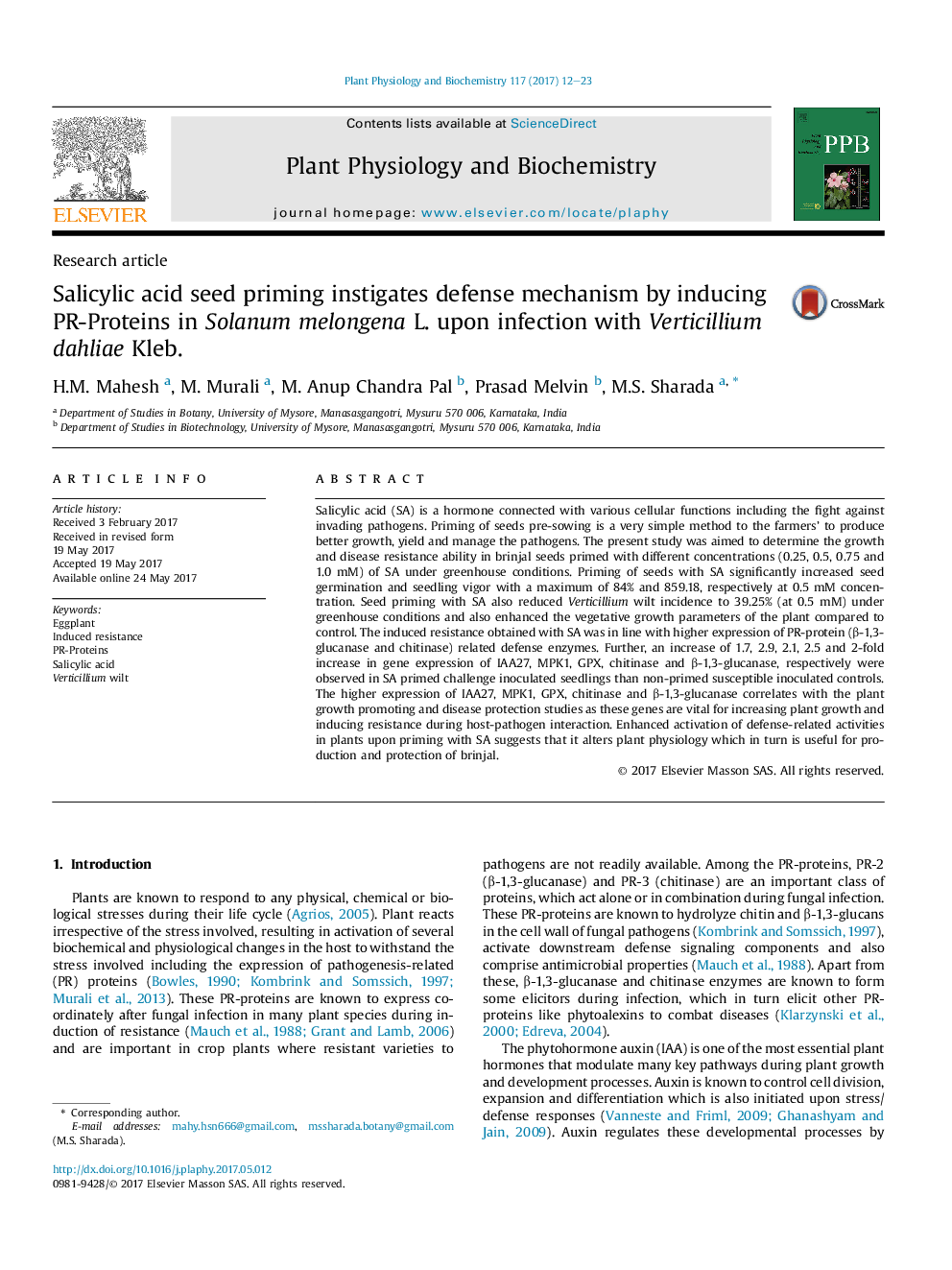| Article ID | Journal | Published Year | Pages | File Type |
|---|---|---|---|---|
| 5515564 | Plant Physiology and Biochemistry | 2017 | 12 Pages |
â¢Seed priming with SA induced resistance against Verticillium wilt in brinjal.â¢SA increased plant growth parameters and defense-related enzymes chitinase and β-1,3-glucanse.â¢SA priming markedly up-regulated the expression of IAA27, MPK1, GPX along with Pathogenesis-related genes chitinase and β-1,3-glucanse in brinjal upon infection with Verticillium dahliae.
Salicylic acid (SA) is a hormone connected with various cellular functions including the fight against invading pathogens. Priming of seeds pre-sowing is a very simple method to the farmers' to produce better growth, yield and manage the pathogens. The present study was aimed to determine the growth and disease resistance ability in brinjal seeds primed with different concentrations (0.25, 0.5, 0.75 and 1.0 mM) of SA under greenhouse conditions. Priming of seeds with SA significantly increased seed germination and seedling vigor with a maximum of 84% and 859.18, respectively at 0.5 mM concentration. Seed priming with SA also reduced Verticillium wilt incidence to 39.25% (at 0.5 mM) under greenhouse conditions and also enhanced the vegetative growth parameters of the plant compared to control. The induced resistance obtained with SA was in line with higher expression of PR-protein (β-1,3-glucanase and chitinase) related defense enzymes. Further, an increase of 1.7, 2.9, 2.1, 2.5 and 2-fold increase in gene expression of IAA27, MPK1, GPX, chitinase and β-1,3-glucanase, respectively were observed in SA primed challenge inoculated seedlings than non-primed susceptible inoculated controls. The higher expression of IAA27, MPK1, GPX, chitinase and β-1,3-glucanase correlates with the plant growth promoting and disease protection studies as these genes are vital for increasing plant growth and inducing resistance during host-pathogen interaction. Enhanced activation of defense-related activities in plants upon priming with SA suggests that it alters plant physiology which in turn is useful for production and protection of brinjal.
